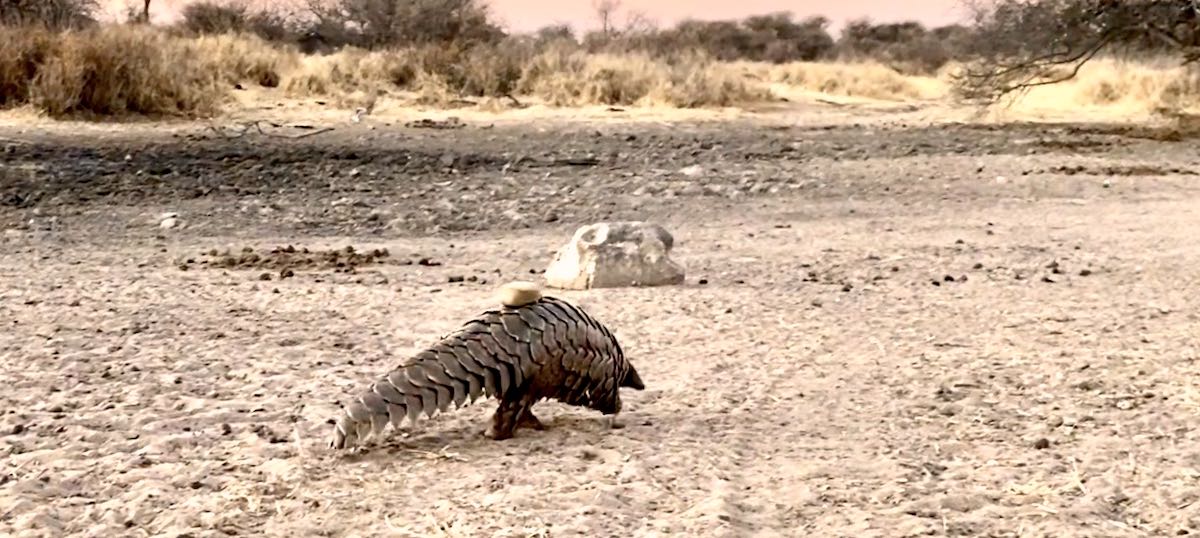
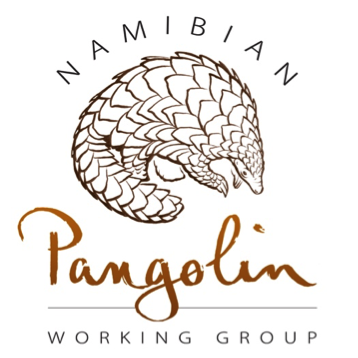
From Facing Certain Death to Contributing to Science – A Pangolin's Tale
29th August 2020
A female pangolin found herself in a situation that is sadly familiar for far too many of her kind – trapped by wildlife traffickers, kept for nearly a week with no food and not enough water, awaiting death.
Despite pangolin scales consisting of keratin (like our fingernails), and thus of no medicinal value whatsoever, the massive market for them in the Far East has led to these harmless animals being given the dubious distinction of “the world’s most trafficked animal”. The biggest driver for this trafficking is Traditional Chinese Medicine (TCM). Despite China announcing a ban on the use of pangolin scales in TCM in June 2020, this was only for their use in raw form and pangolin scales are still listed as a key ingredient in many patent medicines. Pangolin meat is also a sought-after delicacy, so not all pangolins are killed immediately and de-scaled. Some, like this one, are kept alive (although many die in transit) until they are sold – only to be slaughtered and de-scaled sometime before appearing on a dinner plate far from where they once roamed in search of their own insect dinners.
This pangolin has a different story to tell. Unbeknown to her, she is a pioneer – of a sort. Her rescue in July 2020 was the first time the United States Embassy has been involved in stopping wildlife crime in Namibia by obtaining valuable information about this pangolin’s imminent sale through their investigative office in Pretoria. They promptly relayed this information to the Namibian Police Force (NAMPOL), which is part of the The Blue Rhino Task Team, a collaborative effort between NAMPOL’s Protected Resources Division and the Intelligence Investigation Unit (IIU) of the Ministry of Environment, Forestry and Tourism (MEFT). The Blue Rhino team acted swiftly, arresting the four suspects (who also had scales from four other pangolins) and confiscating one female pangolin – the star of our story.
Immediately after the arrest, our pangolin was provided with water and taken to a vet to assess her condition and provide treatment and advice to restore her to full health. From there, she was taken to the Namibia Animal Rehabilitation Research and Education Centre (NARREC). NARREC is a rehabilitation centre that provides the necessary veterinary care and rehabilitates pangolins by taking them on foraging walks through the bush once they have gained enough strength. In this way, our pangolin recovered her health and was finally ready for release. But this was no ordinary release.

NARREC is part of a larger collaboration of institutions called the Namibian Pangolin Working Group, established in April 2020. Besides NARREC, the group comprises MEFT (as the chair), the Namibian Chamber of Environment (NCE), the Namibia University of Science and Technology’s Biodiversity Research Centre (NUST-BRC) and the Rooikat Trust. Together, these institutions are directing much-needed research on the Temminck’s ground pangolin (the only pangolin species in Namibia), providing training for first responders on how to handle confiscated pangolins, establishing a seamless process for live pangolins to be transferred from responders through to rehabilitation centres, and creating national awareness about the plight of this species.
Knowing how pangolins use their habitat and where confiscated ones go after release are among the key research questions the Working Group wants to answer. Previously, we attached radio transmitters to resident or released pangolins, but these are limited because a researcher must get close enough to find the pangolin each time a location point is required. This means we don’t know where pangolins go between these search efforts, and if a released pangolin goes too far from the research base, we may lose track of it altogether. One solution to this problem is to attach satellite tracking devices that are programmed to take hourly GPS points during the pangolin’s most active period (16:00 to 02:00) when they are likely to be outside the burrow and thus visible to satellites. The device uploads the data on a regular basis, so we can simply connect to the satellite via the Internet and download all the movement information to our computer. This is a great method of non-invasive monitoring, yet we can still locate her should we see any concerning movement data or if she needs a welfare check-up.
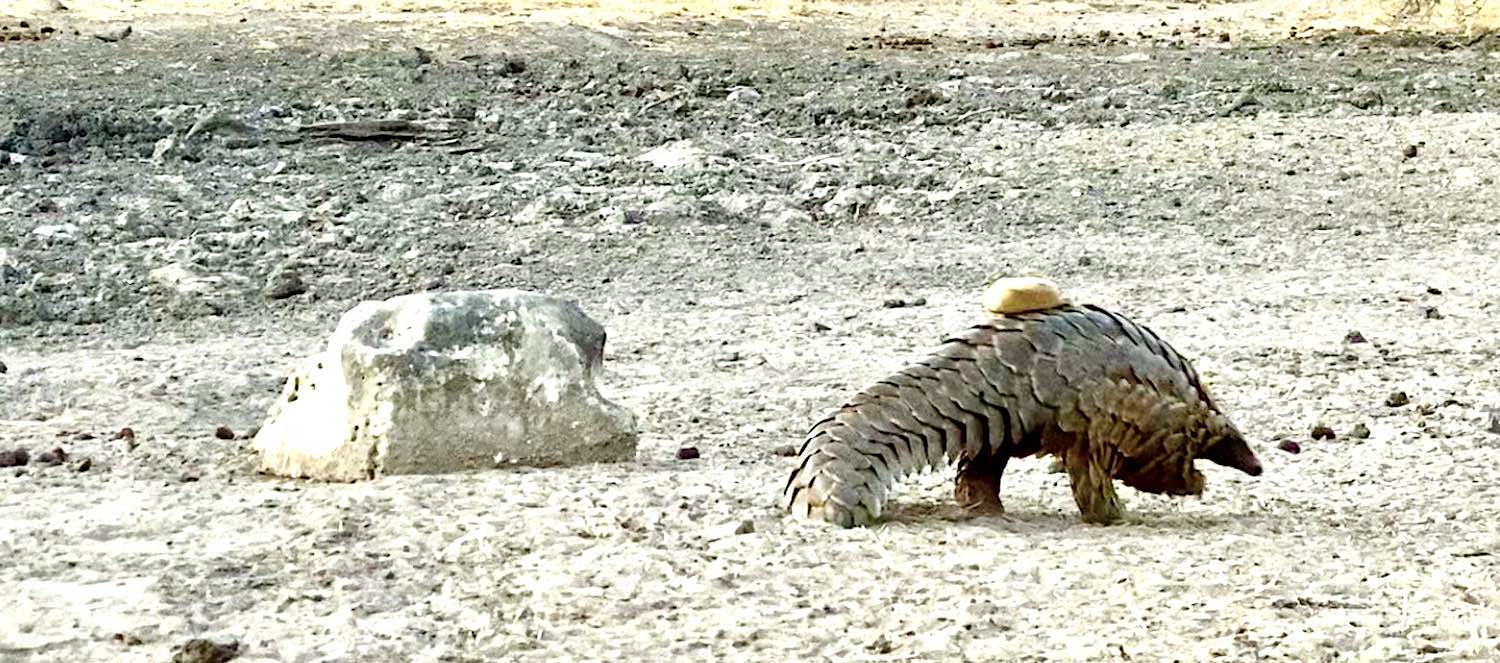
Members of the Working Group and their collaborating and funding partners – the University of St. Andrews (Scotland), B2Gold Namibia and Total – therefore decided that the time had come to try satellite tracking pangolins in Namibia for the first time. After two years of planning and preparation, one of these devices was attached to our pangolin heroine just prior to her release.
As the primary researcher for the Working Group, doing my Master’s degree through NUST-BRC, I have the privilege of tracking this pangolin and discovering more about her long-term post-release movements. Data received thus far reveal that she has established a home range similar to that of resident pangolins I have studied in other areas (see map below). This means that she has found suitable burrows and foraging sites in the release area and has settled down to ordinary pangolin life.
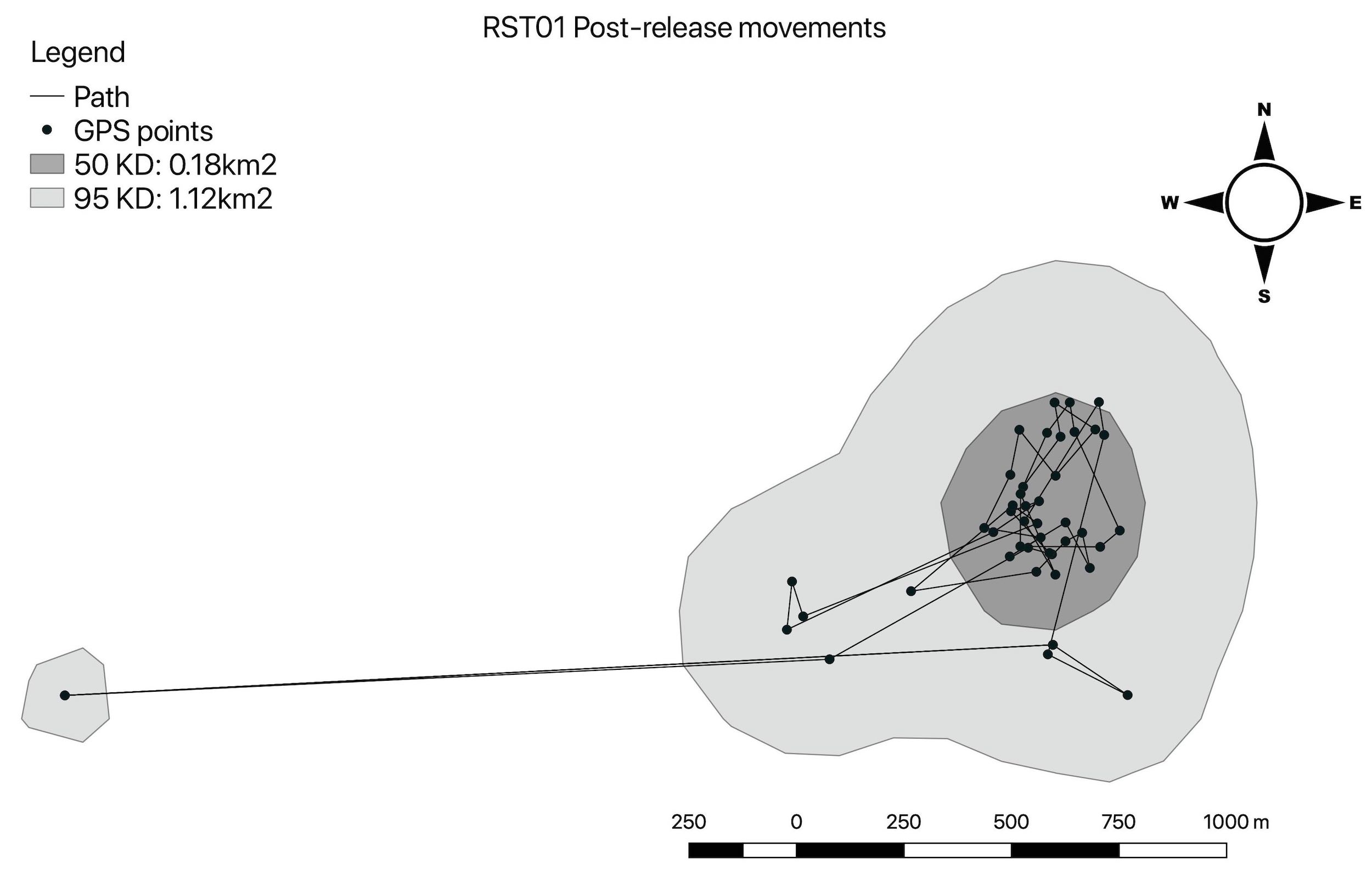
The device is expected to last a few months and will be replaced with a smaller, rechargeable unit, thus provide us with valuable long-term information on her movements and behaviour after her release. Our pangolin heroine is thus providing us with details about her species that we can use to refine our release protocols for other pangolins rescued from the illegal wildlife trade. Having survived the terrible trauma of being captured by wildlife criminals, we wish this pangolin a long and peaceful life.
For articles on similar topics, please click one of the following options:
If you enjoyed this page, then you might also like:
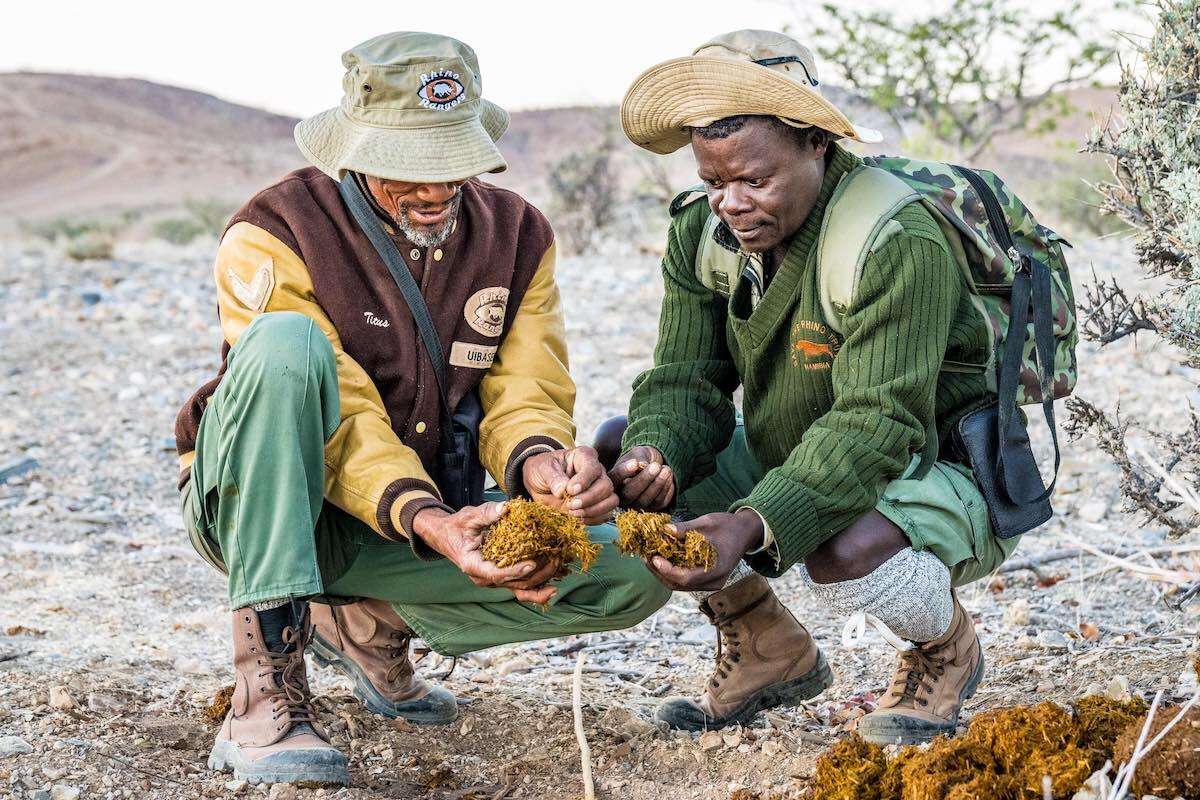


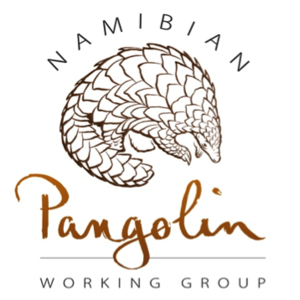
Chaired by the Ministry of Environment, Forestry and Tourism (MEFT), the Group includes the Namibian Chamber of Environment (NCE), the Namibia University of Science and Technology’s Biodiversity Research Centre (NUST-BRC), Rooikat Trust, and the Namibia Animal Rehabilitation Research and Education Centre (NARREC). The Working Group was established in April 2020 to coordinate and drive pangolin conservation and research in Namibia; focusing on reducing the impacts of illegal wildlife trade on this species and understanding its broader conservation needs.

Ms. Kelsey Prediger is currently a research associate and student at the NUST Biodiversity Research Centre and the Secretariat of the Namibian Pangolin Working Group. She completed her studies in zoology and conservation biology in the United States. Her passion for conservation led her to Namibia where she has spent the past four years focusing on the conservation of wildlife. Kelsey is currently pursuing her Masters of Natural Resource Management at the NUST focusing on the ecology of the Temminck's ground pangolin. She is involved with a number of projects whose goal is to learn more about the ecology of these nocturnal and elusive creatures to help provide a base of scientific knowledge from which we can better help save this species from the horrendous wildlife trafficking trade.
Ms. Kelsey Prediger is currently a research associate and student at the NUST Biodiversity Research Centre and the Secretariat of the Namibian Pangolin Working Group. She completed her studies in zoology and conservation biology in the United States. Her passion for conservation led her to Namibia where she has spent the past four years focusing on the conservation of wildlife. Kelsey is currently pursuing her Masters of Natural Resource Management at the NUST focusing on the ecology of the Temminck's ground pangolin. She is involved with a number of projects whose goal is to learn more about the ecology of these nocturnal and elusive creatures to help provide a base of scientific knowledge from which we can better help save this species from the horrendous wildlife trafficking trade.
We use cookies to monitor site usage and to help improve it. See our Privacy Policy for details. By continuing to use the site, you acknowledge acceptance of our policy.
